Why pastured poultry is good fit for grassland farm
Farmers Weekly
OCTOBER 19, 2023
Farmers Weekly At Paddock Farm in Warwickshire, 300 Hy-line and Dekalb hens follow beef cattle around the grazing rotation, producing an average of 240 eggs a day.
This site uses cookies to improve your experience. To help us insure we adhere to various privacy regulations, please select your country/region of residence. If you do not select a country, we will assume you are from the United States. Select your Cookie Settings or view our Privacy Policy and Terms of Use.
Cookies and similar technologies are used on this website for proper function of the website, for tracking performance analytics and for marketing purposes. We and some of our third-party providers may use cookie data for various purposes. Please review the cookie settings below and choose your preference.
Used for the proper function of the website
Used for monitoring website traffic and interactions
Cookies and similar technologies are used on this website for proper function of the website, for tracking performance analytics and for marketing purposes. We and some of our third-party providers may use cookie data for various purposes. Please review the cookie settings below and choose your preference.

Food Politics
JANUARY 29, 2025
It has infected and, in the case of dairy herds and poultry flocks, mass culling: Wild birds Domestic Chickens Domestic Turkeys Domestic Ducks Dairy cattle Raw milk Wild and captive mammals Pet dogs and cats People What is the government doing? Like the versions of flu that people usually get, bird flu can make you severely ill.
This site is protected by reCAPTCHA and the Google Privacy Policy and Terms of Service apply.

Food Politics
DECEMBER 2, 2024
The virus has now affected at least 446 dairy herds in 15 states and more than 100 million birds , mostly commercial poultry, in addition to the documented human cases…USDA is the primary culprit in this failure. READ MORE The government’s inaction has allowed H5N1 to spread with remarkably little attention. billion agriculture industry.
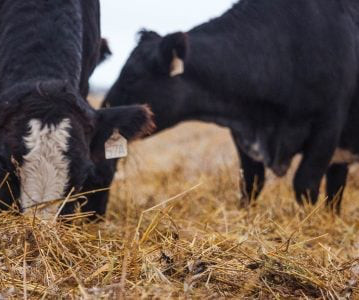
Real Agriculture
MARCH 11, 2024
Agriculture Secretary Tom Vilsack announced the final rule for meat, poultry, and egg products that carry a “Product of the USA” label at the National Farmers Union’s annual convention in Phoenix on Monday.

Real Agriculture
MARCH 26, 2024
A mysterious illness affecting older dairy cows in the southern U.S. appears to be caused by the same virus that has infected millions of domestic and wild birds over the past few years. On Monday, the U.S. Department of Agriculture said milk samples from sick animals on two dairy farms in Kansas and one in. Read More

Food Politics
JUNE 19, 2024
101 herds of dairy cattle. The CDC says: “Mammals can be infected with H5N1 bird flu viruses when they eat infected birds, poultry, or other animals and/or if they are exposed to environments contaminated with virus. The epidemiological fear, of course, is the more cattle affected, the more the virus can mutate (sound familiar?).

NASDA
JUNE 6, 2024
Letter Dear Secretary Vilsack, We appreciate the ongoing efforts of your agency to respond to the outbreak of H5N1 in dairy cattle, especially the opportunity to regularly meet with you and your team to share information and concerns. We implore the agency to release guidance and financial support to dairy cattle auction barns and markets.

Food Politics
SEPTEMBER 4, 2024
The USDA announces updated guidelines for substantiating claims on meat and poultry labels in these categories. A study conducted by researchers and policy experts at George Washington University found 20% of cattle marketed as “raised without antibiotics” to have been treated with antibiotics.

Western FarmPress
MARCH 12, 2025
New Oregon research suggests virus detections dont automatically signal human, poultry or dairy cattle cases of bird flu.

Agwired
APRIL 15, 2025
Thousands of cattle raisers, landowners, wildlife managers and industry partners from across the Southwest gathered in Fort Worth for the 2025 Cattle Raisers Convention & Expo, an annual event hosted by Texas & Southwestern Cattle Raisers Association. Poultry & Egg Association.

AgriLife Today
JULY 26, 2023
69th annual Beef Cattle Short Course set for Aug. 7-9 in Bryan-College Station Looking back at 40 years of advances in the beef industry and toward the next 40 years of opportunities and challenges will be the highlight of the general session during the 69th annual Texas A&M Beef Cattle Short Course in Bryan-College Station set for.

The Lunatic Farmer
APRIL 14, 2025
In the vertically integrated poultry industry, farmers own the land and houses but not the animals. I did a live audience-driven economic comparison between growing corn and cows and cattle beat corn by about $200 an acre. The nearly $1.5 billion in bird flu extermination payments have largely gone to 3 major companies.

Agwired
FEBRUARY 3, 2025
million head of cattle and calves on U.S. 1, 2025, according to the Cattle report published by the U.S. The United States Department of Agricultures Animal and Plant Health Inspection Service (APHIS) is announcing the resumption of cattle and bison imports from Mexico. There were 86.7 farms as of Jan. To protect U.S.

National Sustainable Agriculture Coalition
NOVEMBER 19, 2024
For example, ORG supports the development of fish meal in lieu of synthetic methionine supplements in poultry feed and the use of biological controls instead of streptomycin to manage fire blight in organic apple and pear production. These include: Livestock and poultry breed development for organic systems.

Agric4profits
MARCH 5, 2025
Farm records and accounts were designed for a crop farm, poultry enterprise, and cattle production. In the last article, farm records and account designs were discussed, where samples of three farm enterprises were considered. Additionally, the basic principles guiding the keeping of farm records and accounts were explained.
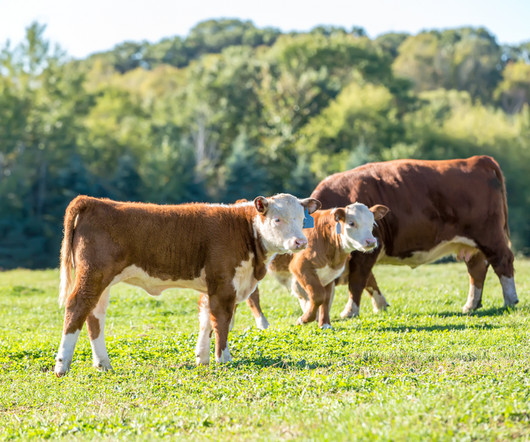
Farmbrite
JANUARY 23, 2025
Animal Feed Recipes for Chicken, Cattle, Sheep, Goat, and Pig Feed Raising livestock can be a rewarding experience, whether you're doing it for fun, food, or as a full-time agricultural business. Fats These provide extra energy, especially for pigs and cattle. Optional: Poultry Premix 0.5-1% Why Make Your Own Feed?

Western FarmPress
JULY 15, 2024
Emergency regulations apply to dairy cattle, poultry, swine.

Agric4profits
MARCH 25, 2025
However, changes in social and religious orientations, alongside urbanization, have increased the commercial value of livestock such as sheep, poultry, goats, and cattle, particularly in southern Nigeria.… … Read More » Distribution of Farm Animals in Nigeria
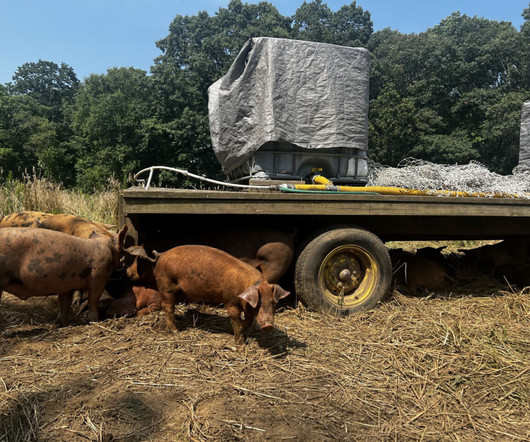
ATTRA
JUNE 11, 2024
Here in Arkansas where I live and raise cattle, goats, laying hens, and a few ducks, the summer temperatures can be punishing. When doing managed grazing of cattle, sheep, or goats, this can mean making sure part of each paddock includes some trees. For example, sheep and goats tolerate heat better than cattle, as a rule.

Trimble Agriculture
MAY 8, 2024
Cattle Cattle inventory is at record lows, but production is strong. At the beginning of 2024, the beef herd inventory was the lowest it’s ever been since 1951 due to a combination of high input costs, drought, and female cattle being marketed at high-than-normal rates. per cwt, a 16-percent increase from last year.

Agwired
APRIL 1, 2025
The largest cattle industry event of the year will be held in the heart of Music City, home of honky-tonks, history and hearty food. Attend a Stockmanship & Stewardship event this year to experience premier cattle industry education. Cox Graduate Student Scholarship in Poultry Food Safety in honor of the late Dr. Nelson Cox.

Agwired
MARCH 27, 2025
pork and poultry industries, allowing for greater efficiency while maintaining food safety standards. New data from the USDA Agricultural Marketing Service is beginning to shed light on the impact of beef and dairy crossbred cattle on the beef supply chain. The National Cattlemens Beef Association (NCBA) thanked the U.S.

Western FarmPress
NOVEMBER 14, 2024
Recent discoveries of avian flu in poultry, cattle and swine prompt USDA to step up testing, public awareness.
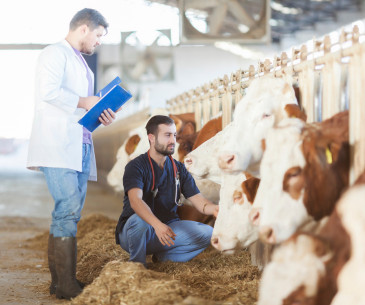
NASDA
SEPTEMBER 15, 2023
Removing the current tax treatment of these awards will allow more ranchers and farmers in rural America to gain better access to a wide array of veterinary services needed for their livestock and poultry. In that time, NIFA received 2,061 applications from 1,451 unique applicants.

Real Agriculture
MARCH 19, 2025
Canadas new agriculture minister has instructed the Canadian Food Inspection Agency (CFIA) to reduce red tape and harmonize certain regulations with trading partners.
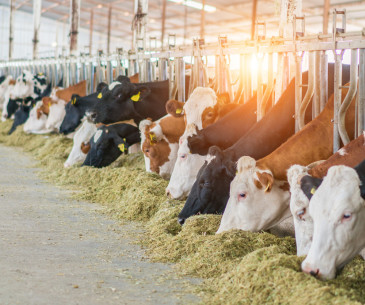
NASDA
SEPTEMBER 25, 2024
Press Release INDIANAPOLIS – At today’s National Association of State Departments of Agriculture 2024 Annual Meeting , the Animal Agriculture Policy Committee hosted a panel focusing on recent outbreaks of H5 influenza in poultry and dairy populations and its impacts on “secure” plans for the livestock sector.

Agwired
DECEMBER 9, 2024
Department of Agricultures (USDA) Animal and Plant Health Inspection Service (APHIS) is announcing the start of its National Milk Testing Strategy (NMTS) , which builds on measures taken by USDA and federal and state partners since the outbreak of highly pathogenic avian influenza (HPAI) H5N1 in dairy cattle was first detected in March 2024.

National Sustainable Agriculture Coalition
DECEMBER 4, 2024
The largest proportion of farms with direct sales to consumers are producing animal products , including beef cattle ranching, cattle feedlots, dairy and milk, hog and pig, poultry and egg, sheep and goat, and aquaculture farms.

Agwired
NOVEMBER 4, 2024
iGENDEC is an advanced software tool designed to help cattle producers understand and improve their herd’s genetics. poultry industry provides 2,012,560 jobs, $132.7 Becky Rasdall, senior vice president of trade and workforce policy for IDFA, accepted the award at the IDF World Dairy Summit. billion in wages, $663.6

Agwired
DECEMBER 24, 2024
The announcement represents the next step toward conducting complete nationwide surveillance under the NMTS and continues to build on measures taken by USDA and its federal and state partners since the outbreak of highly pathogenic avian influenza (HPAI) H5N1 in dairy cattle was first detected in March 2024.
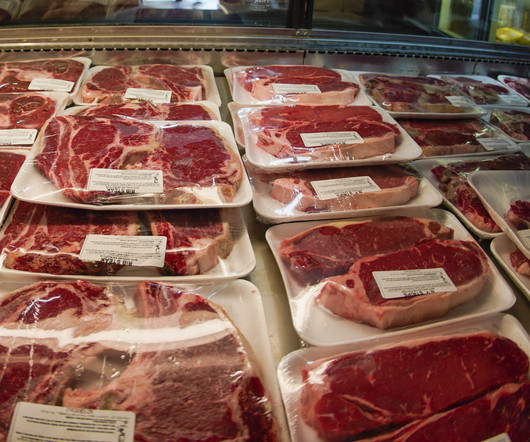
Daily Yonder
MARCH 14, 2024
A long awaited rule that changes which meat and poultry goods can bear the label “Product of U.S.A.” farmers and ranchers has been in decline in recent years as big corporations merge producers in the meat, poultry, and egg markets. will give consumers better information and result in fairer compensation for U.S. The number of U.S.

Agwired
FEBRUARY 10, 2025
poultry farms in 2022, nearly 100 million table egg laying hens have been affected. Chris Chaffee joins the Meat Institute as Director of Legislative Affairs working with Vice President of Legislative Affairs Nathan Fretz advocating for the meat and poultry industry with members of congress and federal officials. 4-6 in San Antonio.

Jayson Lusk
MAY 29, 2023
He explained that most dietary protein consumed in the United States is derived from animal sources, with poultry and meat as the top sources, followed by bread products, milk, cheese, eggs, plant-based protein foods, and seafood (Pasiakos et al., percent decline in the number of cattle raised in the United States. 2015). . ”
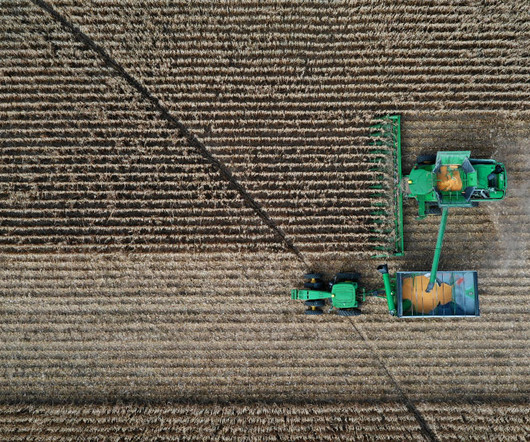
Trimble Agriculture
JANUARY 17, 2024
Poultry and Poultry Products After experiencing record high prices in 2022, boiler prices have started to decline. Cattle and Calves After dwindling herd numbers shrunk supply last year, beef producers saw sharp prices increases. Experts are optimistic that cattle numbers could fully recover to previous levels by 2025.

AgriLife Today
SEPTEMBER 8, 2023
Replacement cattle, grazing and rangeland management among topics The Texas A&M AgriLife Extension Service Beef Cattle Conference for Nolan and Fisher counties will be held Sept. Read More → The post Beef cattle conference to be held Sept. The post Beef cattle conference to be held Sept. 19 in Rotan.

ATTRA
SEPTEMBER 24, 2024
This marks the final investment in the Meat and Poultry Processing Expansion Program (MPPEP), which has provided 74 awards totaling more than $325 million to expand processing capacity and strengthen the food supply chain. farmers, and create jobs in rural areas.
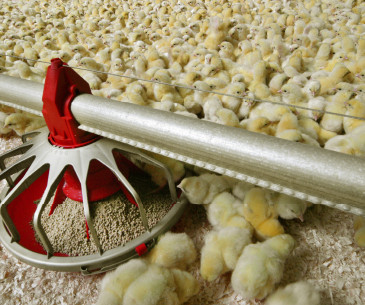
NASDA
JUNE 15, 2023
Dozens of countries have already approved these feed ingredients and those farmers and ranchers are safely using these products, yielding results that improve animal production and well-being, diminish pre-harvest food safety concerns, and boost sustainability opportunities for dairy, livestock and poultry farmers. Sincerely, AB Vista Inc.

Agwired
DECEMBER 6, 2023
“We see a big bullish story developing for cattle, the pork markets are liquidating, the herd’s getting smaller, that means there’s a supply gap and the same thing with poultry…I like the protein side of the plate for 2024.”

Modern Farmer
SEPTEMBER 9, 2024
In a bid to be totally true to his terroir—a French winemaking concept that aims to impart a combination of natural factors including soil, climate and sunlight to the glass—he’s working with a herd of indigenous cattle to “produce” compost. Growth of the market—and the cattle—was slow. million cattle.

National Sustainable Agriculture Coalition
NOVEMBER 2, 2023
Examples of these investments are the Meat and Poultry Programs (MP programs), such as the Inspection Readiness Grant (MPIRG), Processing Expansion Program (MPPEP) and Intermediary Lending Program (MPILP) which have helped smaller plants scale up or prepare themselves for federal inspection utilizing different sized grants and loans.

Agwired
OCTOBER 28, 2024
For more than 30 years, the National Cattlemen’s Beef Association has offered the annual Redbook to help cattle producers effectively and efficiently record their daily production efforts. The pocket-sized booklet simplifies recordkeeping, which can enhance profitability and reduce stress levels.

Modern Farmer
OCTOBER 9, 2023
Cage Free: This term refers to poultry that is allowed to roam indoors without cages and have access to food and water. Photography by Lena Beck) Raised Without Hormones: This term is mostly for cattle, which are sometimes supplemented with growth hormones such as rBGH to make them grow bigger and faster.
Expert insights. Personalized for you.
We have resent the email to
Are you sure you want to cancel your subscriptions?


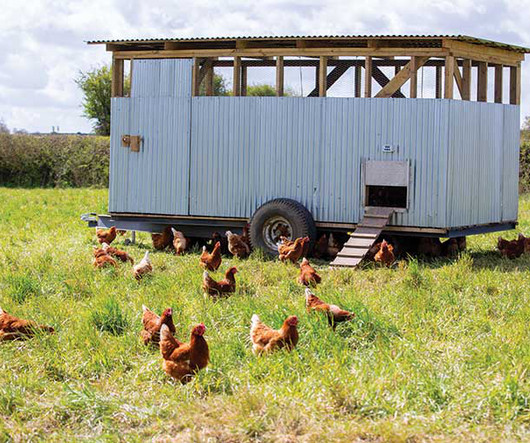
Let's personalize your content